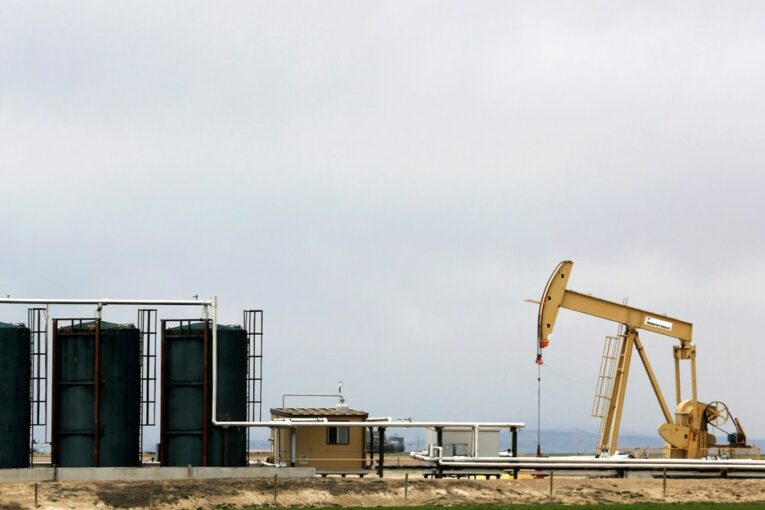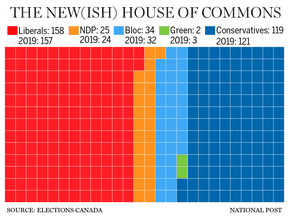
CALGARY — The Canadian oilpatch expects a freshly re-elected federal government will move ahead with new emissions targets in a matter of months as Ottawa prepares for a major climate-change conference in November.
“We don’t want to be sitting back and having things happen to us,” said Brian Schmidt, president and CEO of Tamarack Valley Energy Ltd., adding the industry plans to reach out to officials in Ottawa on expected policies such as methane reduction targets. “How do we work together on what kind of commitments we’re going to make in November?”
After Monday’s federal election returned the Liberals to a minority government, oil and gas executives and policy analysts said they believe new greenhouse gas targets are likely to be enacted to coincide with the 26th Conference of the Parties (COP26) global climate summit in Glasgow, U.K., in November.
Companies are now re-reading the Liberal platform — which included increasing methane emission reductions targets from 45 per cent to 75 per cent and new interim CO2 emissions targets by 2025 — to understand what’s coming in an effort to engage with Ottawa.
Schmidt said the oil and gas industry had a productive relationship with Natural Resources Minister Seamus O’Regan, and expects to work “collaboratively” again since “oil and gas was not a central part of any party’s platform.”
“I suspect that if we get the right players in the right ministries, they will see us as collaboratively working with them to move the industry in the right direction here, including emissions reductions and investment,” he said.
We don’t want to be sitting back and having things happen to us
Brian Schmidt
In years past, Canadian federal and provincial governments have announced emissions reduction policies immediately ahead of major conferences in an effort to draw accolades during the summits — and the same approach is expected before planes depart for Scotland.
“If we’re going to see larger changes or new flags being pointed, it’s likely to be around November, when COP26 takes place,” said Marla Orenstein, director of the natural resources sector at the Canada West Foundation.
“That is when, I suspect the current government would like to come out strong and appear on the world stage with — hopefully achievable, hopefully implementable — strong climate policy,” she said.
Orenstein said the Liberals campaigned largely on the same suite of climate-change policies that they had already begun implementing while in power, although the party did add interim emissions reductions targets for the energy industry on the campaign trail.
“The results have given us continuity — more of the same— with what came before and I think we can assume that the policies themselves are going to follow,” she said, noting that the balance of power in Parliament is a near replica of what it was before the election was called.
Tristan Goodman, president of the Explorers and Producers Association of Canada (EPAC), which represents small- and mid-sized oil and gas producers, said the industry is expecting a few “minor changes” in federal policy, including the interim targets and additional methane reduction targets.
“We have a fairly good understanding in the energy business where the government is moving. We don’t expect significant change from the consistent policy agenda on climate,” Goodman said.
But some energy executives believe climate policy and energy policy in the country has not been stable — and don’t expect predictability even after Monday’s election gave the Liberals a minority government with an almost identical seat count as the 2019 vote.

“What we do need is we need stability and certainty of policy. We do not have that in Canada — we do not, it’s fluctuating all over the place,” said Grant Fagerheim, president and CEO of Whitecap Resources Inc., which produces 117,000 barrels of oil equivalent per day.
Fagerheim said Canada’s long-term emissions targets have changed multiple times in recent years — most recently on July 12 to an up to 45 per cent cut below 2005 emissions — with little consultation with the industry. “The goal posts move with no consultation,” he said.
Environmental groups have pointed to the fact that all major parties campaigned on platforms with serious climate change policies and, as a result, the incoming government should take bolder action on emissions policies targeted at the oil and gas business.
“The Liberal Party’s commitment to bring in measures to significantly lower emissions from sectors that release the most greenhouse gas emissions — oil and gas and transportation — is critical to achieving Canada’s climate goals,” Pembina Institute executive director Linda Coady said in a release Monday.
She noted that those commitments include a 75 per cent reduction in methane emissions below 2012 levels and a target that all light-duty vehicles sold in Canada be zero-emissions by 2035.
“Full and timely implementation of these measures, monitoring progress, and maintaining full transparency in reporting on milestones are essential next steps,” Coady said.
“The federal government has a responsibility to advance the industries that create economic prosperity for Canadians,” Mark Scholz, CEO of the Canadian Association of Energy Contractors, said in a release Tuesday. “Our energy industry is committed to lowering emissions by investing in clean technologies and increasing energy efficiency while providing high-value jobs and resource revenues.”
• Email: [email protected] | Twitter: geoffreymorgan
_____________________________________________________________
If you like this story sign up for FP Energy Newsletter.
_____________________________________________________________
You can read more of the news on source
